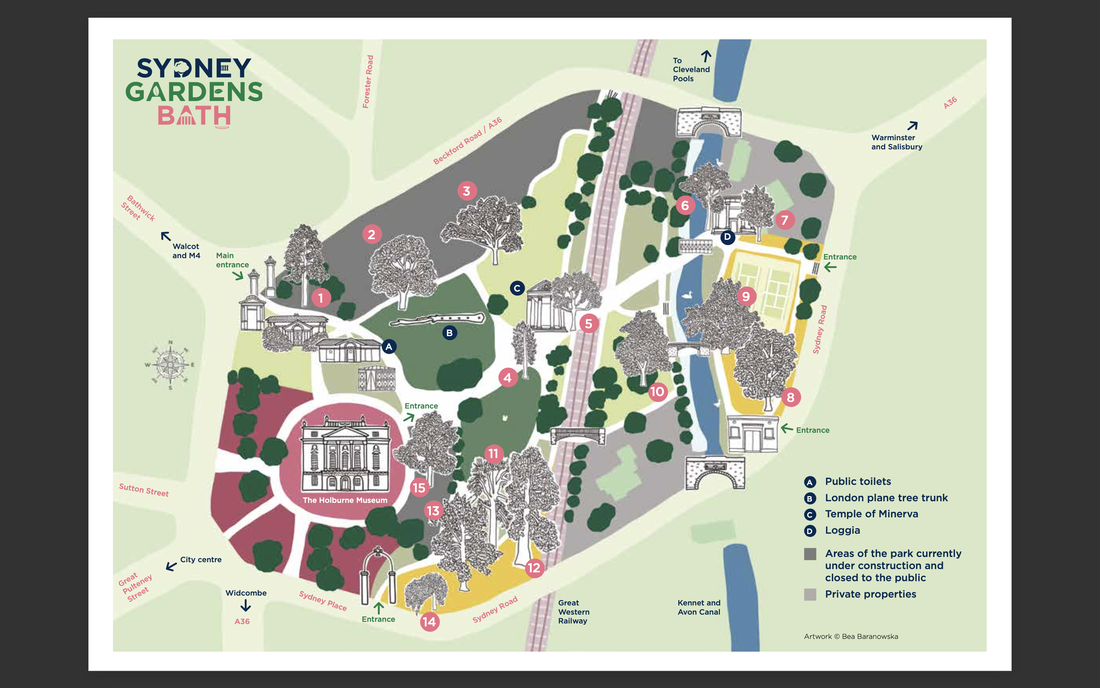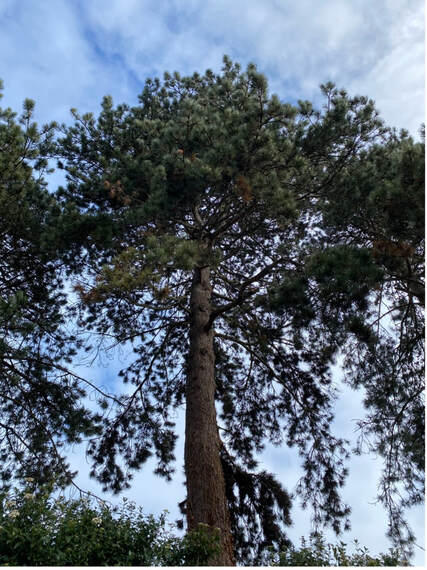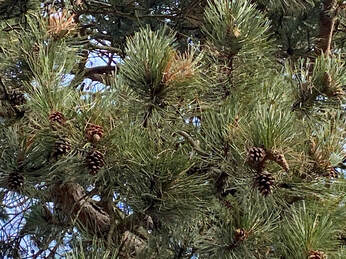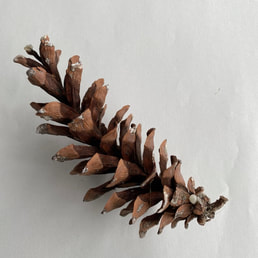The first tree on the Sydney Gardens Tree Trail is the Black Pine. This Black Pine is the tallest, in a group of three pines just inside the main entrance into Sydney Gardens: opposite, Bathwick Street. The main entrance is flanked by two large Bath Stone pillars which originally supported two large iron gates.
It is thought the pines were planted in the early eightieth century because of their position across the route of the original ‘Ride’. The Ride was a surfaced path laid around the inside of the perimeter wall of the gardens for carriages and horse riders. The Ride was part of the original design for the Georgian Pleasure Garden; opened on 11th May 1795. Over time the Ride has been replaced with tennis courts, bowl pitches and other developments in the park.
It is thought the pines were planted in the early eightieth century because of their position across the route of the original ‘Ride’. The Ride was a surfaced path laid around the inside of the perimeter wall of the gardens for carriages and horse riders. The Ride was part of the original design for the Georgian Pleasure Garden; opened on 11th May 1795. Over time the Ride has been replaced with tennis courts, bowl pitches and other developments in the park.
The Black Pine is a large coniferous evergreen tree, native of southern European coastal areas. The Black Pine, also called European Black Pine or Austrian Black Pine, is moderately fast growing, about 30-70cm per year and can reach heights of 20-55m tall with a spread up to around 13m wide. The Black Pine can also be long lived with some trees over 1000 years old.
Black Pines are well suited to urban parks due to their tolerance of air pollution. However, they are intolerant of shade and require full sun to grow to their full potential. The bark of the Black Pine is yellow/brown to grey in colour and has many splits and fissures. The fissures increase with age and become scaly plates and flaking fissures.
Black Pines are well suited to urban parks due to their tolerance of air pollution. However, they are intolerant of shade and require full sun to grow to their full potential. The bark of the Black Pine is yellow/brown to grey in colour and has many splits and fissures. The fissures increase with age and become scaly plates and flaking fissures.
The Black Pine is monoecious: producing both yellow male female and the red female flowers on the same tree. The seed cones appear from May to June and are mature around September to November. The ripening cone changes from green to pale grey and and is around 5-10cm long. The cones open from December to April to release winged seeds; 20-25mm long, which are dispersed by the wind. The Black Pine will reach maturity at 15–40 years and produce large seed crops at intervals of 2–5 years.
The Black Pine is monoecious: producing both yellow male female and the red female flowers on the same tree. The seed cones appear from May to June and are mature around September to November. The ripening cone changes from green to pale grey and and is around 5-10cm long. The cones open from December to April to release winged seeds; 20-25mm long, which are dispersed by the wind. The Black Pine will reach maturity at 15–40 years and produce large seed crops at intervals of 2–5 years.
Reference
Gazzard, G. A. MSc (2021) wrote the above article with information from the following sources.
Rose, B. BSc (Hons) MSc DipArb(RFS) MICFor RCArborA Chartered Arboriculturist Arboricultural Association Registered Consultant (2020). Bosky Trees, Arboricultural Impact Assessment & Tree Protection Plan for trees at Sydney Gardens, Bath. (Accessed 13/03/21).
Woodland Trust, Black Pine. (Accessed 13/03/21). Available at:
https://www.woodlandtrust.org.uk/trees-woods-and-wildlife/british-trees/a-z-of-british-trees/black-pine/
Wikipedia, Black Pine Pinus nigra. (Accessed 13/03/21). Available at:
https://en.wikipedia.org/wiki/Pinus_nigra




